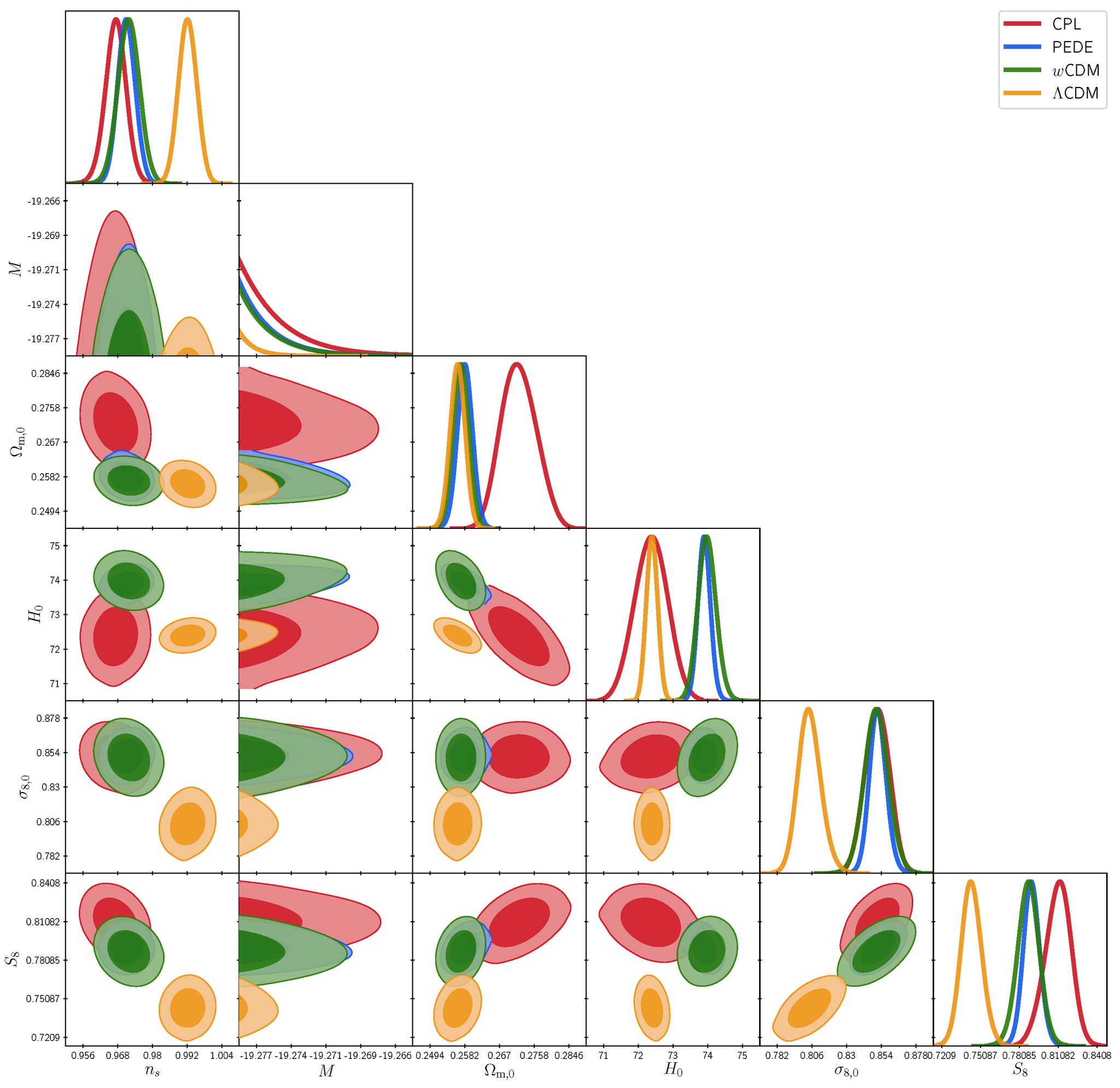Late-transition vs smooth H(z) Deformation Models for the Resolution of the Hubble Crisis
Published in Physical Review D, 2021

Abstract
Late time gravitational transitions at low redshifts zt<0.1 have been proposed recently for the solution of the Hubble and growth tensions. Such transitions would naturally lead to a transition of the intrinsic type Ia Supernovae (SnIa) luminosity and absolute magnitude M at zt. They could be accompanied by a transition in the dark energy equation of state parameter w (Late w-M Transitions - LwMT). Here we compare the quality of fit to cosmological data of this class of models with the corresponding quality of fit of ΛCDM and some of the best smooth H(z) deformation models (wCDM, CPL, PEDE). We use the full Cosmic Microwave Background anisotropy spectrum data, Baryon Acoustic Oscillations (BAO) data, the Pantheon SnIa data, the SnIa absolute magnitude M as determined by Cepheid calibrators and the value of the Hubble constant H0 as determined by local SnIa calibrated using Cepheids. We find that smooth H(z) deformation models have problems which are not shared by transition models: 1) They have a worse fit to low z geometric probes (BAO and SnIa data). 2) They favor values of SnIa absolute magnitude M that are lower compared to the value Mc obtained with local Cepheid calibrators at z<0.01. 3) It has been shown previously that smooth deformation models tend to worsen the growth Ωm,0-σ8,0 tension. We also find that a w-M transition model (LwMT) does not provide a better quality of fit to cosmological data than a pure M-transition model (LMT) where w is fixed to the ΛCDM value w=-1 at all redshifts. We conclude that the LMT models have significant advantages over smooth late time H(z) deformation models in addressing the Hubble problem.
Instruction - CLASS Implementation
Install the CLASS and MontePython programs as it is described in their official repositories.
Substitute the appropriate files with the corresponding ones inside the folder CLASS Implementations and run the programs as usual. For a step-by-step guide of the modifications implemented in CLASS, click here.
In our analysis we include a robust Redshift Space Distortion compilation presented here. For the implementation of the likelihood follow the instructions of this github repository.
Cite
If you use any of the above codes or the figures in a published work please cite the following paper:
Late transition vs smooth H(z) deformation models for the resolution of the Hubble crisis
George Alestas, David Camarena, Eleonora Di Valentino, Lavrentios Kazantzidis, Valerio Marra, Savvas Nesseris, and Leandros Perivolaropoulos
Phys.Rev.D 105 (2022) 6, 6, arxiv:2110.04336.
Any further questions/comments are welcome.
Authors Lists
George Alestas - g.alestas@uoi.gr
David Camarena - david.f.torres@aluno.ufes.br
Eleonora Di Valentino - e.divalentino@sheffield.ac.uk
Lavrentios Kazantzidis - l.c.kazantzidis@gmail.com
Valerio Marra - valerio.marra@me.com
Savvas Nesseris - savvas.nesseris@csic.es
Leandros Perivolaropoulos - leandros@uoi.gr
